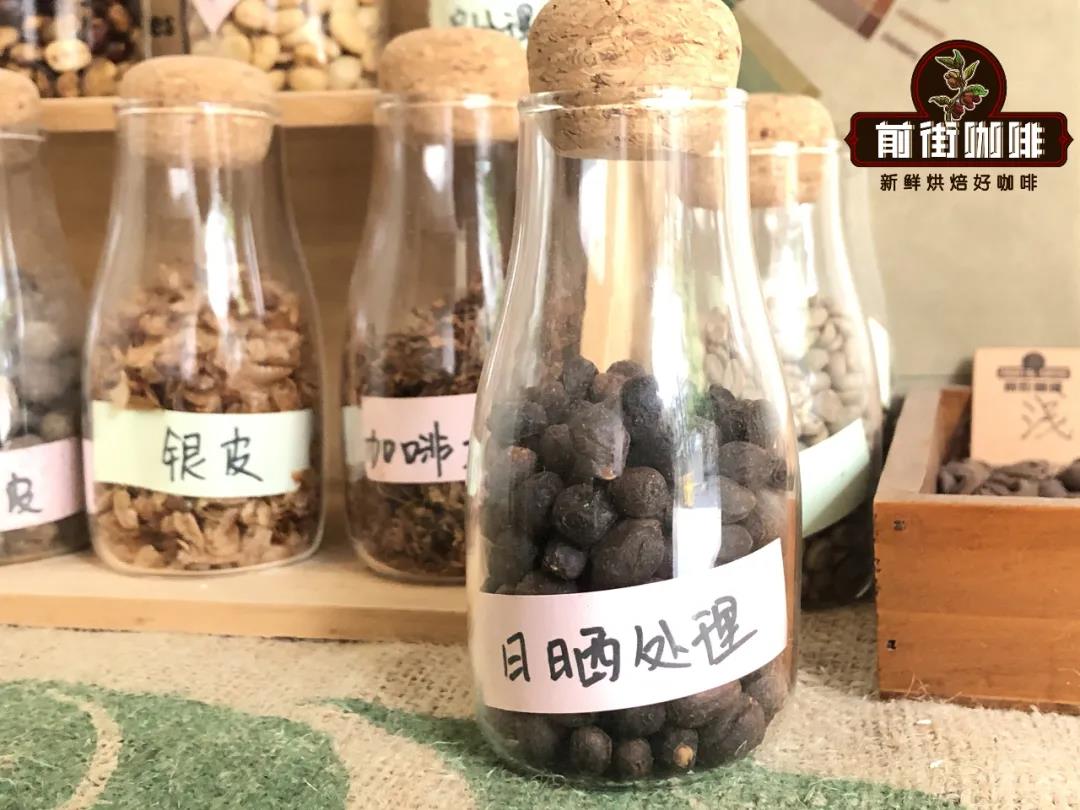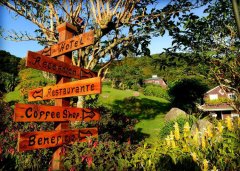The effect of altitude on the Flavor and quality of Coffee beans
Green coffee beans are generally graded according to green bean size, defect rate, and altitude. Green bean size and defect rate are easy to understand, many people do not understand Why do some producing areas grade coffee beans according to their growing altitude, and many coffee sellers also advertise their coffee as high-altitude coffee and sell it at a high price? Why?
The first thing to realize is that location is important to coffee bean flavor.
All coffee is grown in the tropics. In fact, altitude has no direct effect on coffee, but altitude can affect the growth and quality of coffee through the redistribution of meteorological factors (temperature, light, heat, wind speed, rainfall, etc.). The tropics between the Tropics produce the world's best Arabica coffee. Central and South America, South Asia and some Pacific islands, South Central Africa are also the most important coffee growing regions in the world. 3000-6000 The altitude of 900-2000 m provides ideal conditions for coffee growing: frost-free weather averaging 60-70 F (15-21 C) year-round, moderate rainfall of about 80 inches, and plenty of sunshine. Coffee beans in cooler mountains grow slower, and the slower ripening process makes coffee beans higher in sugar, more interesting in flavor, and more mellow. Higher elevations have higher drainage, produce more concentrated fruit flavors, and the best Arabica coffee growing areas have very fertile soils, often in volcanic areas.
Coffee beans grown at high altitudes are hard and dense and have the potential to develop special flavors. At high altitudes, these beans are carefully picked one after another only during the ripening season. In general, coffee aromas become more prominent and distinctive as altitude increases (see photo). From the mild sweetness of Brazilian beans at low altitudes of 3500 feet to the soaring taste of Ethiopian coffee beans above 6000 feet, altitude can make coffee beans better play out complex and subtle taste.
Central American coffee is rated according to the altitude at which it is grown.
Mexico, Honduras, Haiti and other countries are graded according to height: Strictly High Grown (SHG), followed by High Grown (HG)
Mexico is called Altura, which means "high" in Spanish, indicating that it is coffee grown at a high altitude; Papua New Guinea attaches a name of "Mile High" to coffee beans grown in highland mountains.
Another way, alpine areas due to the cold climate, coffee growth rate is slow, the density of raw beans is higher, the texture is harder, the coffee is more mellow aroma, and there is a soft sour; on the contrary, lower areas, the density of raw beans is small, the texture is not hard, the coffee quality is worse, so some people also use "hardness" to grade.
Guatemala, Nicaragua, El Salvador, Costa Rica and other countries are graded as follows
grade growth height grade abbreviation
(Extreme hard beans) about 1372~1524 meters SHB
(tall hard beans) about 914~1372 meters GHB
(hard beans) about 610~914 meters HB
(Pacific Coast) Approximately 300 - 1000 m
Practice shows that the effect of altitude on quality has exceeded that of genotype. Viagra personally believes that the classification of coffee beans by altitude is more scientific and reasonable than simply grading by size and defect rate, because to a certain extent, the classification by altitude is indirectly graded by taste, the beans with low altitude grow fast and large, and the defect rate can be changed by selection, while altitude cannot be changed.
According to the determination, the same kind of coffee beans, the higher the altitude, the greater the acidity, the smaller the concentration; conversely, the smaller the acidity, the greater the concentration. So for friends who like fruit acid flavor and have low requirements for concentration High-altitude coffee is very suitable for you, it is your good coffee; for those who don't like fruit acid flavor and have high coffee concentration requirements, the higher the altitude, the less suitable for themselves. No matter how high its quality was, it was still waste to him. Therefore, the choice of altitude should be based on personal taste.
Second, how do we know if the coffee we buy is really high altitude? Coffee growth and reproduction have specific requirements for environmental conditions, sexual preference quiet wind, warm, shade or semi-shade environment. In other words, not every environment can grow and produce coffee. Coffee production is regional. Coffee producing areas in the world are mostly distributed in tropical plateaus or high-altitude mountains. The equatorial region has high heat and can be planted to an altitude of about 2000 meters; the heat on both sides of the regression line is low, most of which are below 1000 meters. It is mainly distributed in Yunnan in China. Therefore, when making good coffee, you also need to understand the geographical climate and climate of the coffee producing area, and drink more to better understand the different flavors of coffee.

Important Notice :
前街咖啡 FrontStreet Coffee has moved to new addredd:
FrontStreet Coffee Address: 315,Donghua East Road,GuangZhou
Tel:020 38364473
- Prev

Flavor characteristics of water-washed and sun-cured Yega Chuefei boutique coffee different from sun-treated coffee.
Today's protagonist is Yejiaxuefei, which is best described by the phrase "coffee entrance and flowers in full bloom", just as flowers promote the comfort of taste buds and olfactory cells in the nasal cavity. What's the difference in the taste of Yega Chuefei between washing and tanning? Distinguish between one and two different methods of processing raw beans: coffee beans after harvest must immediately enter the treatment process, otherwise they will begin to ferment.
- Next

Effects of humidity, temperature and soil of planting environment on flavor quality of coffee beans
What is the effect of soil and moisture on the flavor of coffee? When we tested the coffee, we found that there is a phenomenon that the coffee grown in volcanic rock is the most balanced in terms of acidity, bitterness, mellow and flavor, so it is rich in taste. Some studies have found that this is because volcanic rocks contain high concentrations of sulfur and sulfides, which are necessary for the synthesis of some aromatics. Therefore, species
Related
- Guji coffee producing area of Guji, Ethiopia: Humbela, Shakiso, Wulaga
- What is the most expensive variety of Qiloso in BOP multi-variety group?
- How to store the coffee beans bought home?
- Why are Yemeni coffee beans so rare now?
- Ethiopian Sidamo all Red Fruit Sun Sun Santa Vini Coffee beans
- SOE is mostly sour? What does it mean? Is it a single bean? what's the difference between it and Italian blending?
- Is Italian coffee beans suitable for making hand-brewed coffee?
- How to choose coffee beans when making cold coffee? What kind of coffee beans are suitable for making cold coffee?
- Just entered the pit to make coffee, what kind of coffee beans should be chosen?
- Can only Japan buy real Blue Mountain Coffee? What are authentic Jamaican Blue Mountain coffee beans?

